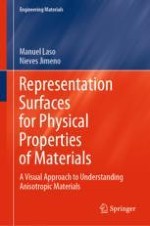2020 | OriginalPaper | Buchkapitel
3. Representation of Material Properties by Means of Cartesian Tensors
verfasst von : Manuel Laso, Nieves Jimeno
Erschienen in: Representation Surfaces for Physical Properties of Materials
Aktivieren Sie unsere intelligente Suche, um passende Fachinhalte oder Patente zu finden.
Wählen Sie Textabschnitte aus um mit Künstlicher Intelligenz passenden Patente zu finden. powered by
Markieren Sie Textabschnitte, um KI-gestützt weitere passende Inhalte zu finden. powered by
